Choosing Roses for Different Structures
If you want to create a rose garden or incorporate roses into your garden design, you need to know what kind of roses you need for obelisks, arches, fences, walls, or an herbaceous border.
It’s Alexandra from The Middle-Sized Garden YouTube channel and blog. I went to Peter Beales Classic Roses in Norfolk, where a free two-acre rose garden is open to the public all year round, to talk to their Nursery Manager, Ian Limmer.
Ian has been growing roses for 46 years, so I asked him what roses we need for arches, obelisks, fences, and walls. I also asked him key questions about what we do about blackspot, how to plant a rose, and how to replant roses.
Expert Tips for a Gorgeous Garden
Choosing Roses for Obelisks
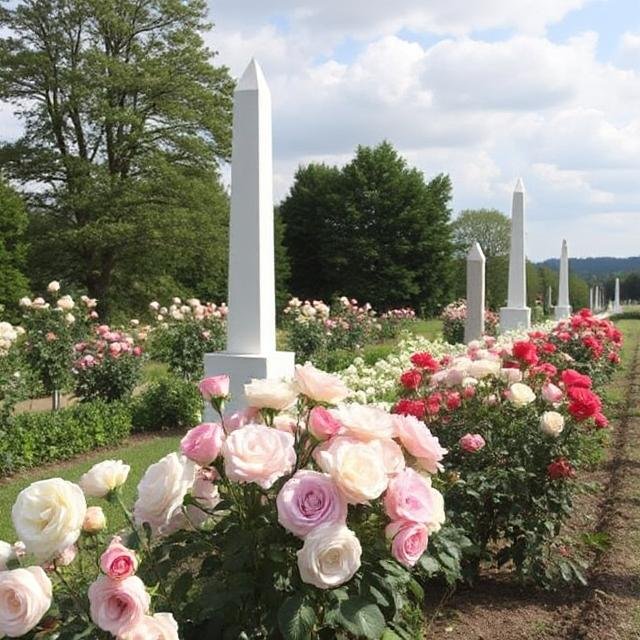
Firstly, I’ve got an obelisk in my garden, and the rose I planted for it appears to be utterly unrelated to me. I realize I’ve chosen the wrong shape of rose for this obelisk. What would you say about choosing roses if someone were about having an obelisk?
Well, first of all, you want to decide where it will go within the garden. If it’s a small garden, will it be a small obelisk? Then you can choose some more miniature shrub roses. Shrub roses are perfect for obelisks, so we’re looking at maybe a 5ft.
If you have 8-foot-tall obelisks like the ones we’ve got in the gardens here, you can use some of the small patio climbers or ramblers, which are very good and useful.
And we’re all looking for repeat flowering as much as possible, but do bear in mind the more you want something to repeat or continuously flower, the more you’ve got to look after it, the more you’ve got to feed it. You know you’ve got to work at it. But it’s just thinking of the aspect, where it will go, the height of the obelisk, and so on.
Choosing Roses for Arches
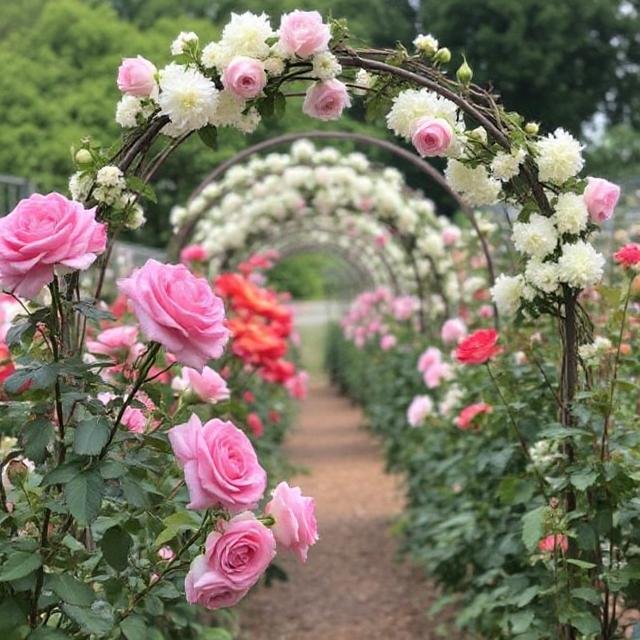
And when it comes to a rose arch, what must you remember then? You can use climbers and ramblers. Generally, I tend to explain the differences between climbers and ramblers – and I say typically, ramblers usually have flowers, maybe 20-30 flowers on the end of each stem, and generally they don’t repeat flowers. However, we are getting more and more repeat-flowering ramblers.
So they give you the wow factor for that shorter period. Climbers generally tend to have larger flowers, and three flowers at the end of a stem. So there’s all, you know, things that are going on there, but it doesn’t give you that wow impact like we’ve got, you know, on an arch beside us here.
It’s also again using other plants, so we must remember—you know, you don’t these days tend to plant a rose garden just with roses—you have an herbaceous border, so you add other climbing perennials and clematis and things like that to mix in with your roses.
Lovely, you’re saying that the rambling rose is often a better choice for an arch. With climbers, they will always want to grow up, so the top of the arch is a semicircle like that, but the climbers will go up there like that.
Ramblers will give you that sort of dreamy look, where they cascade down, and you’re walking through a lovely arch like that. So I’m a great fan of ramblers – more so than climbers.
Long Arch Walls and Pergolas
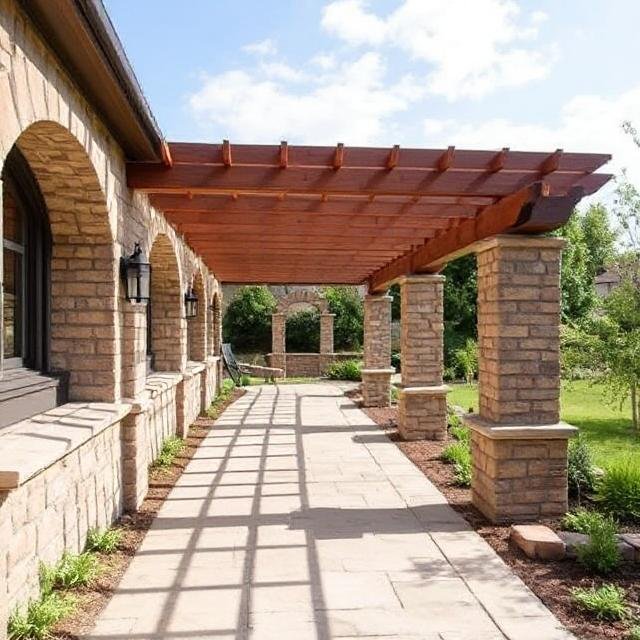
What about when the arches – you’ve got a long arch wall here at the Peter Beales Garden? Yep. Is there anything different? Is one arch the same as six arches, or is it better to have a long corridor that people will walk down?
I’ve been working with roses for 45-46 years. I’m learning all the time. You never know; you never know it all. But what we have found here, as you walk through the corridor of our pergola behind me, is that there are gaps in the top of the roof, so to speak.
We train three or four stems on each pole, and sometimes we’ll cut the whole window out. Because we’re all guilty, and I’ve been doing this for many years, there’s a lovely shoot – I’ll tie that one in the winter, I’ll tie that one in. And when it comes to the summer, if you look there, the grass is lovely underneath that pergola.
That’s because it’s getting sunlight through there. If you tie everything in, then it becomes dark, and you lose—you know, you lose your grass. Buyou can-youuou can-youu know, got a long pergola—you can use some shrub roses—put an odd shrub rose in there—and they will climb, and they’ll maybe go up to about 5ft.
But then you leave the next pole for a slightly more vigorous one. If you’re having a pergola, and it’s say eight poles or something, I’m very keen for you to have the same eion on the other side for the first one. That invites you into the tunnel, giving you that balanced look.
Once you’ve passed that, you could alternate and do whatever you like. But if you view from the house, you see this lovely mass of and so on.
Roses for House Walls and Front Doors
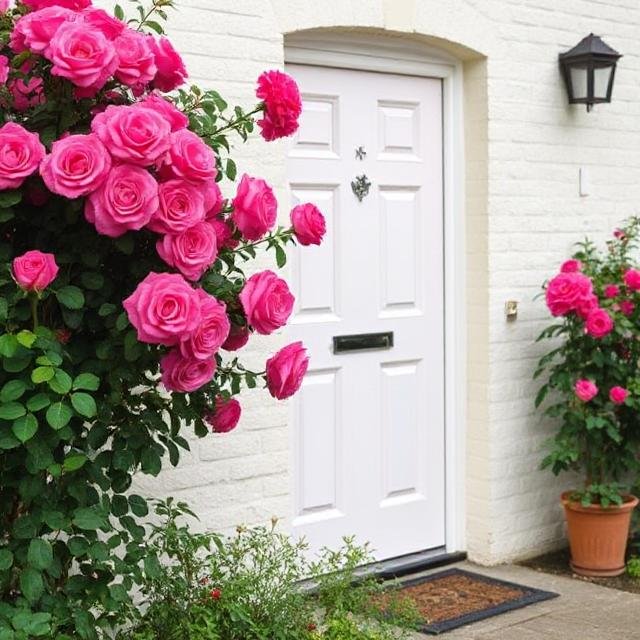
And when we come to roses for, say, the front of a house, maybe you’ll take them over the door. What would you have to think about then?
Two or three things. You want to think about the size of the rose. It could be a cottage. It could be a bungalow. It could be a three-storey house. How much do you want to cover the house wall? Do you want it to cover up to the second storey? Do you want to do it over the arch, over a front door, and frame it?
When putting a rose on a wall, getting your wires in first is good. Then, as it grows, you can support the rose on the cartoon, the cartrellis is horizontally up and around.
But the important thing is you also know to think: Is it a south-facing wall? Is it going to be too hot for too many hours during the day? Is it a north-facing wall? What will take a north-facing wall? Several roses are still happy to grow on a north-facing wall.
So, generally, would you say climbers or ramblers? Climbers, I think, would be better. You can have both. It’s not a problem; you’ve got two roses on either side of the door.
Because one rose will go up, it won’t go down. If you want a tunnel effect, you need two roses on either side, and generally, we say you should have the same rose on either side. But there’s no rule.
Some might say I’ll have a pink,, ellow, and white on either side. But what tends to happen is you always get a good year on the pink, and then sometimes there’ll be a good year on the white. You end up thinking: oh,,,, I wish I’d had the same. You’ll always end up comparing.
Roses for Fences
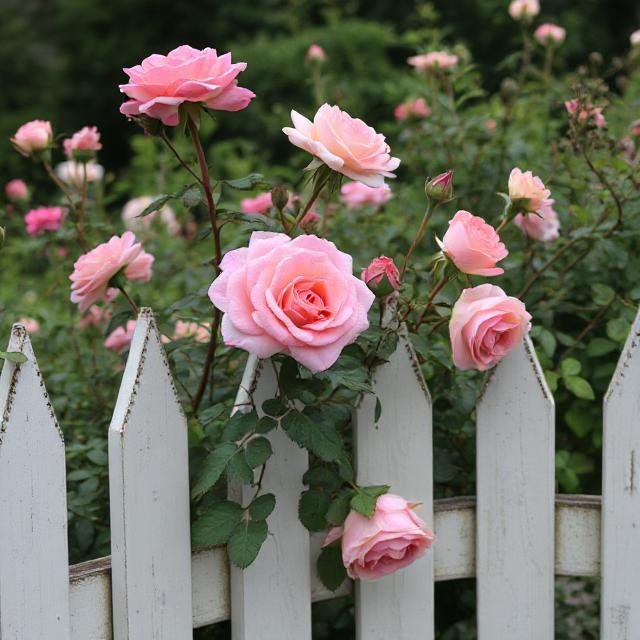
Are there any considerations like that for roses over a fence?
Fences can be anything from 3ft up to 5ft or 6 ft, but you can use ground cover roses, you know,o,w, for fences. So they can be small climbers, so to speak.
So that’s a good tip. You can use ramblers – climbers wouldn’t necessarily work. Let’s assume you’ve got a fence that’s 50ft long, or something like that, you know, you could easily have about six or seven – plant a rambler every 10 ft – and then that would join together.
And you can keep ramblers down, but climbers are a no-no because they do that and go upwards.
Companion Planting with Roses

And you’ve mentioned growing plants with roses, and of course, I remember the rose gardens of my childhood, where rose beds – where roses were in neat rows – there was nothing else there. But now you’re saying the thought is gone in the other plants.
Are there any plants that are particularly good to grow with roses?
There are so many perennials out there: we have got grasses, we’ve got lupins, we’ve got you know, in the spring we’ve got daffodils, we’ve got tulips, we’ve got everything – it’s just a matter of doing your homework first.
Looking, is it a factor, whether it is ordered, is it in the middle of the border, and choosing a plant that goes 2ft tall in the middle of the border ou might want it 3 to mighmi5ht bigg tall, or aoor ashrubby rose at the back of the border, and so on.
But we have got all sorts of things – we’ve got grasses, we’ve got irises, we’ve got geraniums and so on. It’s like a cottage effect, as we tend to say now.
You’re exactly right. That was how roses were perceived in the late ’60s and early ’70s. We were here in the late ’70s and early ’80s, and this was just purely a rose garden with nothing else in it. Now, it’s a garden with herbaceous daffodils.
The garden looks superb from April through October/November because we’re also using other plants. If we used roses, they were only suitable for about five weeks.
Then what you’ve got to remember: you see something in the garden center, read what it says, because you can put it in there, and you think “oh that’s lovely, that’ll fit in that hole”, and then suddenly five years later down the line, three years later down the line, it’s 8ft tall and it’s in the middle and it’s blocking off things.
So it is essential to help and advise. Looking at the label is necessary for instructions. If it says 8 ft, it will be roughly 8 ft—it might be 9 or 10 ft.
I must think that in a herbaceous border, or any other border – even if it’s an island border like we’ve got beside us here – get some height into it. Have an obelisk. You know, have an arch joining one bed to another bed.
It would give you an interest in the garden, and that would make a massive difference to its feel.
Roses Near Seating Areas
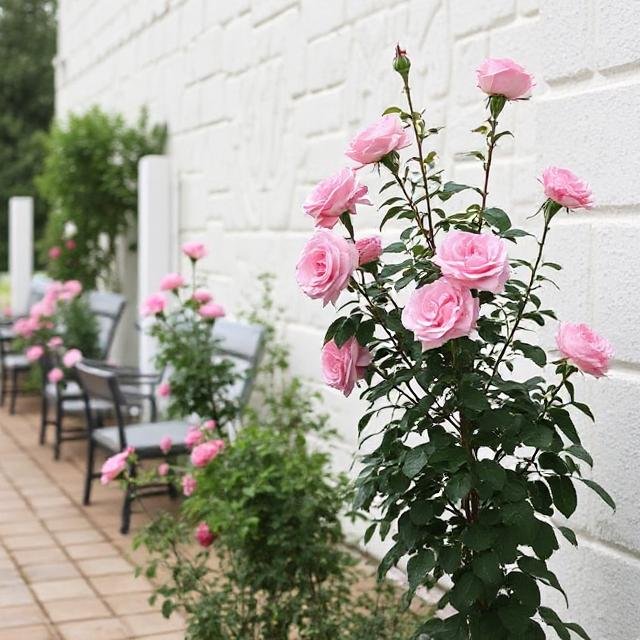
With roses near a bench or a seating area, what would you think of? Because firstly y ou probably want the scent, butsecondly,n you wouldn’t want people to get too scratched. Are there issues around there?
Yeah, you know, we have a lot of people saying that they’ve just had a baby and a little child. You know, can you supply a rose without thorns? Well,yes, you canou cann. There are one or two—maybe a handful, 10.
But then you’ve taken away 850 other varieties that we do. So you’re restricting it. I grew up as a child with roses, and so did you, and they have thorns. If you fall into it, you know, you do learn.
If you’re going to have roses and you’re a little bit worried about the thorns, what you could do is to, where the bench is, plant the two or three roses a little bit further, and then have something, a perennial, so as you’re sitting there you’ve got the visual of the perennial. Still, you’ve also got the visual of the rose, but it’s away from your elbow.
Dealing with Black Spot

One of the things we discussed earlier, but I think we need to go over it, is the question of the black spot. I said I don’t notice black spots—I try to feed my roses—and you, fortunately, told me that was roughly the right approach. So tell me more.
Yeah, I’m afraid of what’s happening now. YoPeoplehink, you’re living in a perfect world where they are with you, and everything is going with them.
Roses have blackspot, and we must get over that. It has a little bit on the leaves – it won’t kill the plant.
Your first flush is wayss gogoeso ththatou won’t see mumanylack spspots,s we’re looking around the gardens now. Once they finish flowering, you deadhead them and want them to flower again.
That’s when they start suffering because people don’t add that extra feed, you know, during the summer months. I said the feed when we were planting when we were planting, but that’s just for planting.
You need to feed slow-release fertiliser in the spring, which takes about five or six weeks to go down. So if you put that down around February/March time, the next time you put some slow-release fertiliser down is when you’re deadheading and tidying up, and then you want some more fertiliser.
But bear in mind that it will take five or six weeks to go down. Then, you want to start thinking about tomato feed. Liquid feed is very good—you can get Maxicrop with added iron—anything you know will give the flowers and the roots a boost.
And keep them moist. Roses love water, and you cannot overwater a rose. I’d much rather say set up a better feeding program than say, “It’s got a black spot, get something off the shelf, and spray it.”
We’re trying to avoid that. It’s so much more important to keep the rose healthy, and then it’ll respond better. But it will get a little bit of a black spot.
The black spot will not ultimately harm the rose.
Replanting Roses and Soil Preparation
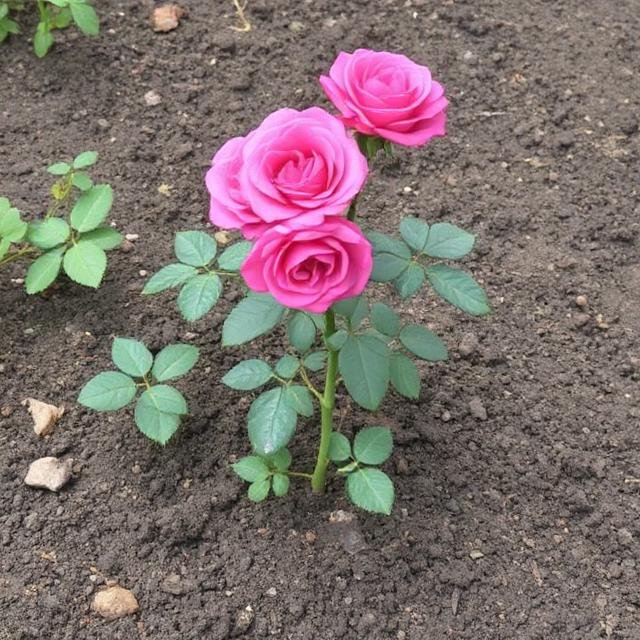
You mustn’t put a rose where a rose has been before, OK? The lifespan of a rose, as I said, is anything between 20 years and 80 years, and it takes a lot of good trace elements out of the soil.
So if you then buy a fresh plant and put it in, you know, within about three or four years, it will suffer as well. So, you need to get a cardboard box that holds 12 bottles of wine.
You know, if we can relate to that sort of size, enjoy the wine, and then use the cardboard box. Dig the soil out. It’s a wheelbarrow full, so dispose of that in another part of the garden.
It won’t poison the soil—it’s just had the trace elements removed for the rose. Put the cardboard box in there, fill it with good fresh soil from another part of the garden or an allotment, and then plant it—you know, plant it out.
That rose will last long because you’ve just changed all the soil.
Planting Roses Correctly
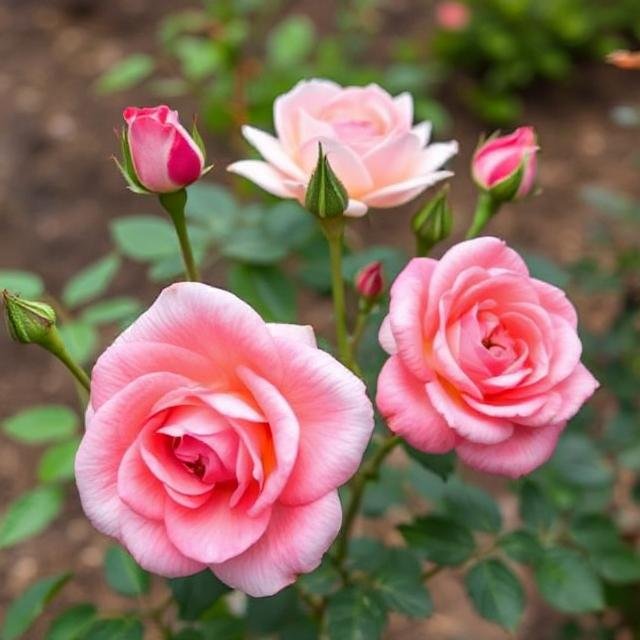
Then, they are planted right where the graft is; it just needs to be about an inch below the soil. If it’s too high up, it will just wave around and not settle in so well.
And when you’re digging the hole to plant it, are you digging it the size of the roots, or are you digging it much bigger?
When we’re planting bare-root roses, I tend to say about a spade’s width and depth, and then you know that’s fine.
Fork over the bottom so it doesn’t hit a barrier and compact. You can go a little bit bigger. You don’t want to dig a hole like a V because you get the compaction on either side.
Give it the feed that it wants. Yes, you can use mycorrhizal, the friendly fungi, and put it on the root structure, and that was it – maybe a little fertiliser around the top.
Or you use the old-fashioned method of slow-release fertiliser. And I tend to use – rather than say grams, you need so many grams – a good handful at the bottom of the hole, mix that up, a good handful on the pile of soil you’ve taken out of the hole.
When you mix that up, firm it wein, and anandprinkle around the top, you’ve got it bottom, and sprinkle. And that really will set the rose off to a good start.
Final Thoughts and Further Inspiration

To see another brilliant rose garden and find out answers to your top rose-growing questions, don’t miss this next with Neil Miller, Head Gardener of Hever Castle, which has some stunning rose gardens.
And thank you for reading. Goodbye!






